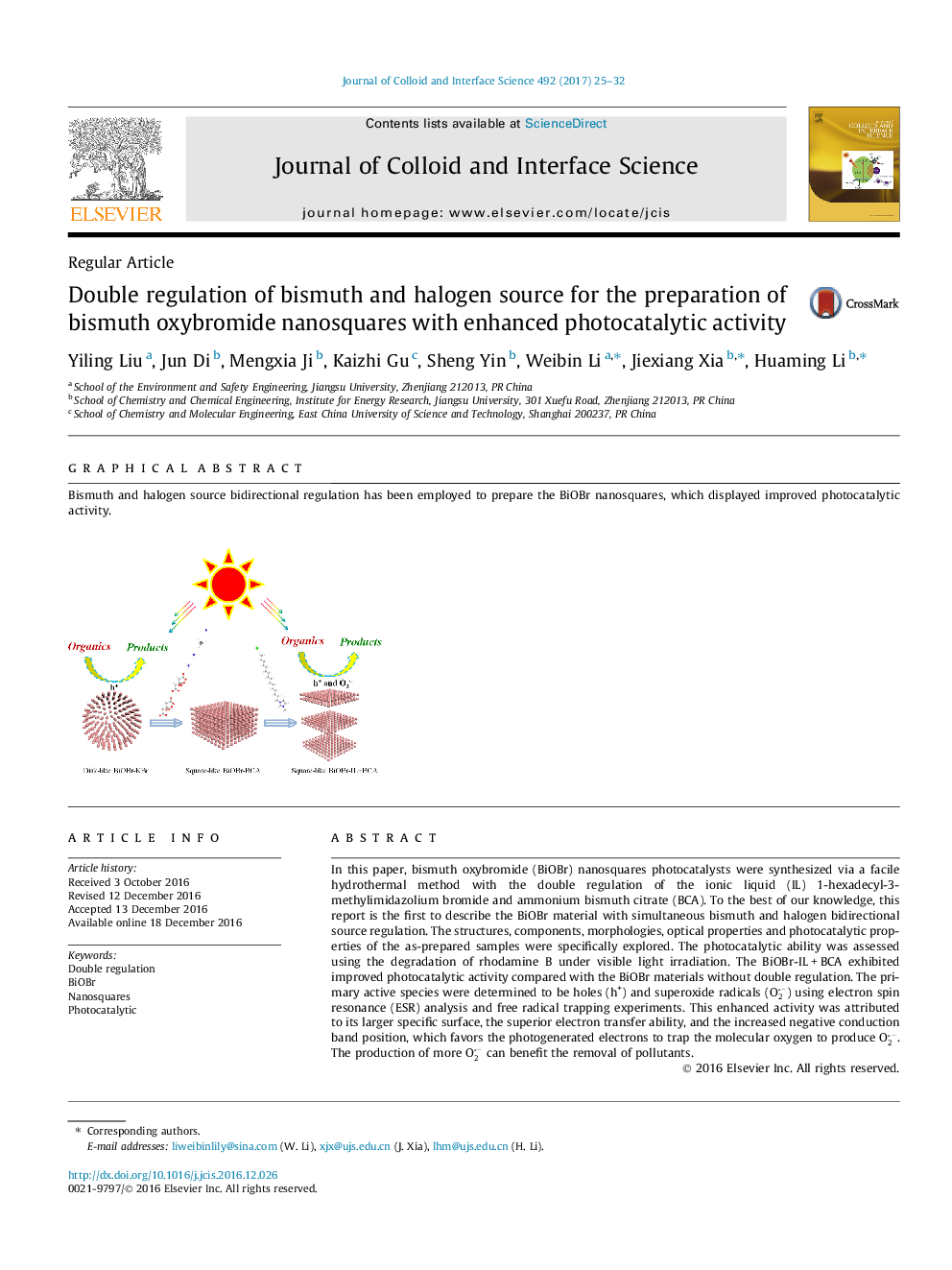| Article ID | Journal | Published Year | Pages | File Type |
|---|---|---|---|---|
| 4985169 | Journal of Colloid and Interface Science | 2017 | 8 Pages |
In this paper, bismuth oxybromide (BiOBr) nanosquares photocatalysts were synthesized via a facile hydrothermal method with the double regulation of the ionic liquid (IL) 1-hexadecyl-3-methylimidazolium bromide and ammonium bismuth citrate (BCA). To the best of our knowledge, this report is the first to describe the BiOBr material with simultaneous bismuth and halogen bidirectional source regulation. The structures, components, morphologies, optical properties and photocatalytic properties of the as-prepared samples were specifically explored. The photocatalytic ability was assessed using the degradation of rhodamine B under visible light irradiation. The BiOBr-ILÂ +Â BCA exhibited improved photocatalytic activity compared with the BiOBr materials without double regulation. The primary active species were determined to be holes (h+) and superoxide radicals (O2â) using electron spin resonance (ESR) analysis and free radical trapping experiments. This enhanced activity was attributed to its larger specific surface, the superior electron transfer ability, and the increased negative conduction band position, which favors the photogenerated electrons to trap the molecular oxygen to produce O2â. The production of more O2â can benefit the removal of pollutants.
Graphical abstractBismuth and halogen source bidirectional regulation has been employed to prepare the BiOBr nanosquares, which displayed improved photocatalytic activity.Download high-res image (150KB)Download full-size image
